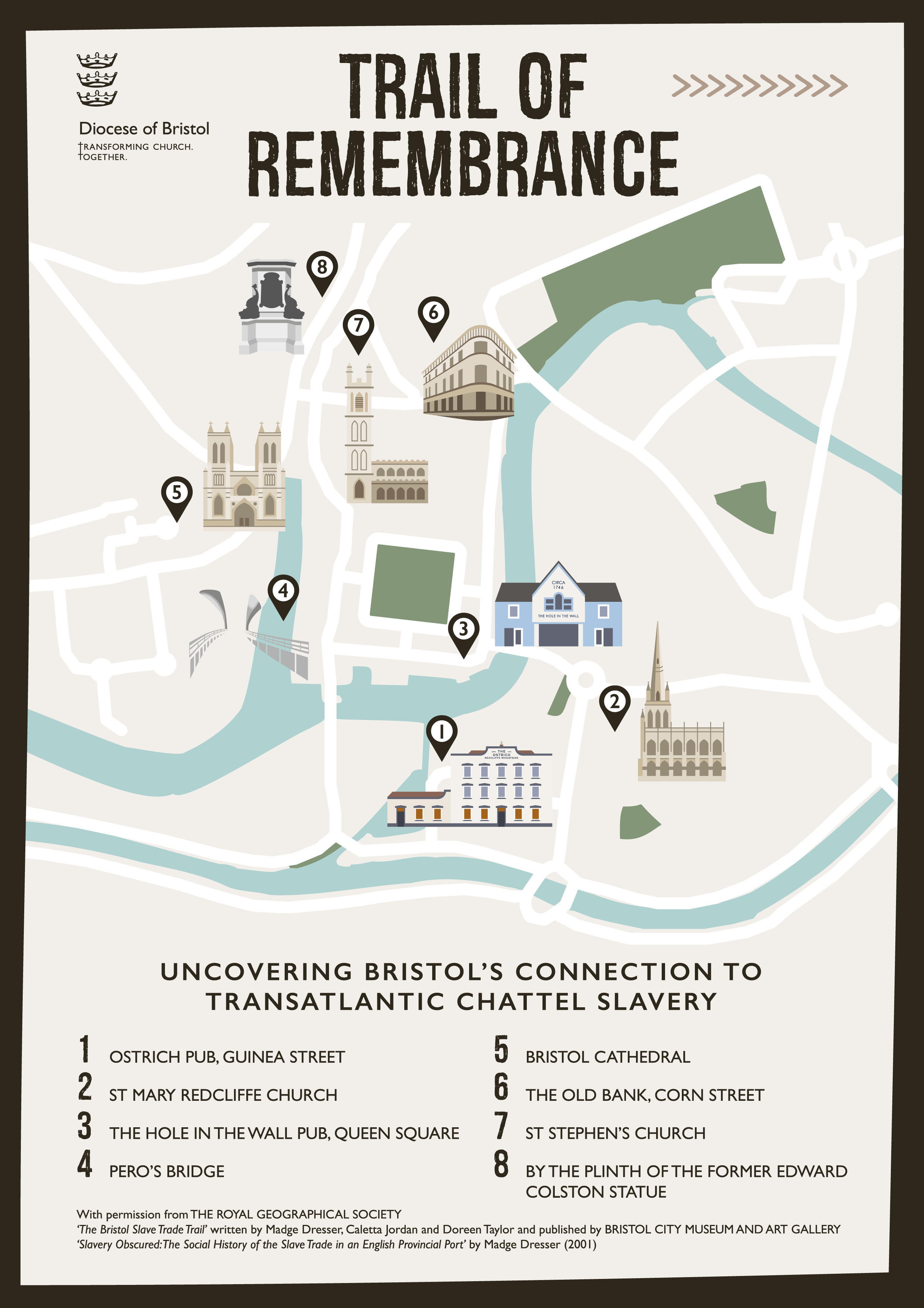 Explore Bristol’s past through the Trail of Remembrance: Uncovering Bristol’s Connection to Transatlantic Chattel Slavery, a self-guided historical walking tour across eight significant locations in the city centre. This trail sheds light on Bristol’s deep-rooted involvement in the transatlantic slave trade, a history integral to understanding the city’s growth and wealth. The tour invites you to reflect on this legacy, fostering a journey of remembrance, and a commitment to racial justice.
Explore Bristol’s past through the Trail of Remembrance: Uncovering Bristol’s Connection to Transatlantic Chattel Slavery, a self-guided historical walking tour across eight significant locations in the city centre. This trail sheds light on Bristol’s deep-rooted involvement in the transatlantic slave trade, a history integral to understanding the city’s growth and wealth. The tour invites you to reflect on this legacy, fostering a journey of remembrance, and a commitment to racial justice.
The tour includes a complimentary audio guide and a PDF map, and takes approximately 1.5 hours to complete. Each stop offers historical insights, prayers, and reflections designed to engage participants in a deeper conversation about the past and its lasting impact.
Start your journey today by visiting our trail page here
Why We’re Doing It: Our Commitment to Racial Justice and Contested Heritage
This trail is part of the Diocese of Bristol’s ongoing commitment to racial justice and our work in examining contested heritage within our diocese. As a Diocese, we recognise the importance of acknowledging difficult and dark aspects of our history, including the ways in which the church and city were complicit in the transatlantic chattel slavery. This walking tour serves as a tool for reflection and education, supporting our wider Racial Justice Strategy which focuses on reconciliation, repentance, and transformation.
We believe that by understanding this history and engaging with the uncomfortable truths of the past, we can foster a more inclusive and just future for all. This trail is one element towards fulfilling that vision.
Bristol’s Role in Transatlantic Chattel Slavery
Bristol played a significant role in Transatlantic Chattel Slavery, becoming one of the key ports involved in shipping enslaved Africans to the Americas and the Caribbean. Wealth accumulated through the exploitation of enslaved people built much of the city’s infrastructure and wealth, including some of its most famous landmarks. The Trail of Remembrance uncovers the stories of individuals and institutions that profited from this trade and those who were directly impacted by it.
Key Locations Include:
- Outside the Ostrich Pub, Guinea Street
- St. Mary Redcliffe Church
- The Hole in the Wall Pub, Queen Square
- Pero’s Bridge
- Bristol Cathedral
- The Old Bank on Corn Street
- St. Stephen’s Church
- The Plinth of the Former Edward Colston Statue
Through this journey, we invite you to reflect on the significance of Bristol’s history, learn from it, and join us in our mission to seek justice, equity, and healing for all communities.